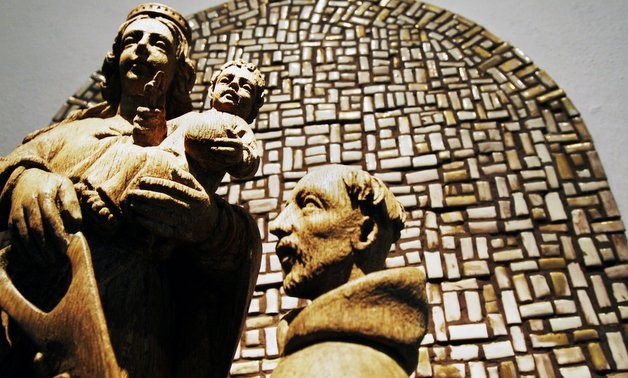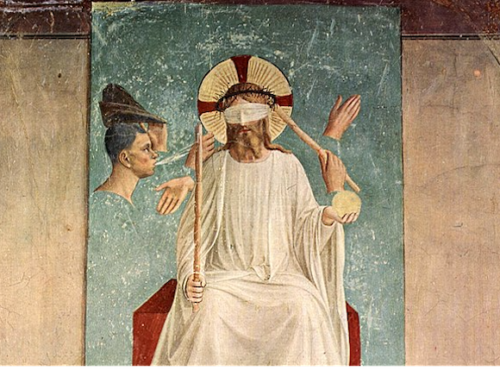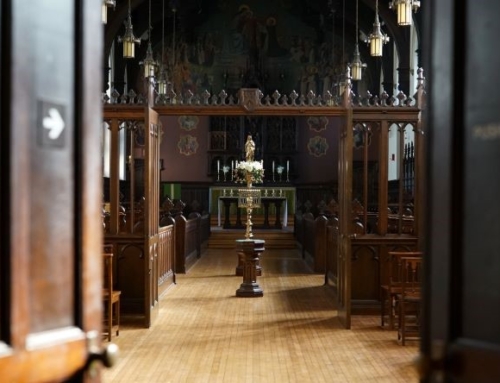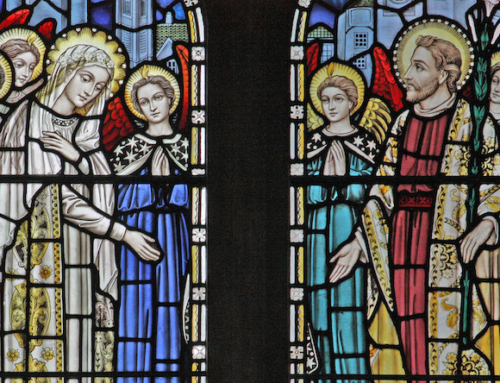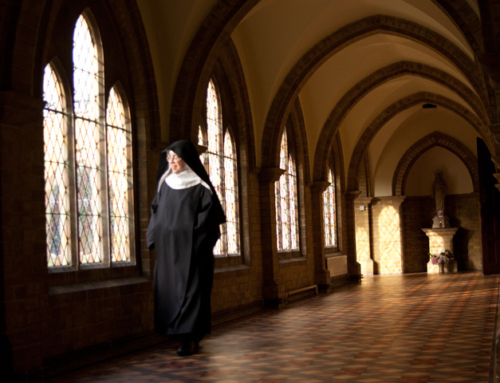This is the second post in a five-part series marking the opening of the Year of Consecrated Life.
“What your child is coming to do is to reveal to you what she feels, or, to be more exact, what her God, in the hours of profound recollection, of unifying contact, makes her understand” (Bl. Elizabeth of the Trinity, “Let Yourself Be Loved”). This “unifying contact” that Bl. Elizabeth of the Trinity speaks of is at the heart of the Carmelite vocation. Just as Elijah heard the “still small voice” on Mt. Carmel, Carmelites seek God in hours of silent prayer and recollection, hoping that He will draw them ever more deeply into loving union with Him.
Carmelite Origins
The Carmelite life takes many forms. Its tradition traces the order’s lineage back to the prophet Elijah himself, but most historians agree that the order, while taking inspiration from Elijah and other ancient hermits on Mt. Carmel, began in the mid-1100s. Originally the Carmelites were a strict, eremitical community of men. In the mid- to late 1200s, however, repeated Saracen attacks forced the brothers to depart Mt. Carmel and settle in other lands. A couple of groups settled in Europe and became mendicants. Led most notably by St. Simon Stock, they took up residence at many universities and devoted themselves to study and the active life while maintaining an ascetical and contemplative dimension. A couple of centuries after the order arrived in Europe, several groups of women asked the Prior General to become affiliated with the order. He gave them the rule and constitutions and organized them into monasteries. In the 1500s, the reforms of St. Teresa of Avila and St. John of the Cross led to the establishment of the Discalced Carmelites for both the nuns and the friars. Today this twofold organization of the Carmelites – the Order of Carmel (a.k.a. the Ancient Observance or O. Carm.) and the Order of Discalced Carmelites (O.C.D.) – still exists. For the women, in addition to monastic communities, there are now communities of active sisters who undertake such apostolates as caring for the elderly or teaching children. More recently there have also been communities of hermits organized, both men’s and women’s, which follow more closely the original Carmelite way of life. They are under the authority of the Prior General of the O. Carms. Lay men and women can join the Carmelites by becoming members of the Third Order.
A Vocation to Love
St. John the Apostle said in his first epistle that “God is love.” The mission of the Carmelites is to let this Love permeate the entirety of their being, conforming them to Himself. They also share in Love’s thirst for souls and recommend the rest of us in the Church to Him. St. Therese of Lisieux is one Carmelite saint who epitomized this sort of life. She once expressed an interest in and desire for a myriad of vocations and all of their great works. She finally recognized, however, that all of her desires could be satisfied in leading to the fullest the life of charity to which all Christians are called. She summed up her vocation as a Carmelite nun in these words: “O Jesus, my Love, at last I have found my vocation, my vocation is Love! … In the heart of the Church, my Mother, I will be Love! … Thus I shall be all things: thus my dream shall be realized!” St. Therese was able to focus singularly on perfection in this loving union with God and so served as an example and a source of encouragement and strength for the rest of the Church. In doing so, she took her cue from her venerable Carmelite forbears. St. John of the Cross, for example, had written centuries earlier that “an instant of pure love is more precious in the eyes of God … and more profitable to the Church, than all other good works together, though it may seem as if nothing were done.”
Carmelite Spirituality
Carmelite spirituality has a few well-known characteristics. The first is that it is thoroughly Marian. Throughout their history, Carmelites have had an intense devotion to the Mother of God under the title of Our Lady of Mt. Carmel. As part of this, they promote the popular devotion of wearing the Brown Scapular which Our Lady gave to St. Simon Stock as a sign of favor and protection. Secondly, Carmelites are renowned for their mysticism. When they arrived at the universities of Europe, the friars wedded their knowledge of God gained in their experience of the eremitical life to the science of theology, especially as taught in the school of St. Thomas Aquinas. The mystical theology that resulted has been and continues to be a great boon to the Church. It of course aided and in turn was aided by the great mystics of the order who have already been mentioned. St. Teresa of Avila, who wrote such spiritual masterpieces as The Interior Castle and The Way of Perfection, and St. John of the Cross, whose works include The Ascent of Mount Carmel and The Dark Night of the Soul, have led countless followers to a deeper union with God through their insights into prayer, contemplation, the states of the soul and its acts and experiences. Carmelite spirituality is also very ascetical. Mortifications and penances are undertaken to free the soul from attachments to whatever is not God. Reading about these can often make the Carmelite life seem harsh and joyless, but Carmelites are frequently noted for their deep and abiding sense of joy. It is a natural result of focusing on and achieving union with the Highest Good and Ultimate End of life.
Mutual Edification
The Carmelite masters benefited much from the teaching and influence of Dominicans as noted above. I think Dominicans in turn can benefit from the example of the union of knowledge and love that the great Carmelites have set. The two orders have many things in common. A focus on contemplation, the theology of St. Thomas, and Marian devotion are just a few of them. At times, though, the Dominican emphasis on the intellect can overlook the role of experience and the affections in the spiritual life. Learning about the Carmelite life can help spur us on to pursue unifying contact of the whole of man with the Divine.
✠
Image: St. Simon Stock, Carmelite Saints Chapel

